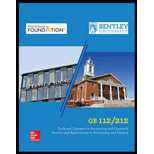
Concept explainers
Computing
Lin’s Dairy uses the aging approach to estimate bad debt expense. The ending balance of each
Required:
What amount should be recorded as Bad Debt Expense for the current year?
Want to see the full answer?
Check out a sample textbook solution
Chapter 6 Solutions
GB 112/212 MANAGERIAL ACC. W/ACCESS >C<
- I am searching for the correct answer to this general accounting problem with proper accounting rules.arrow_forwardPlease provide the correct answer to this general accounting problem using valid calculations.arrow_forwardPlease provide the correct answer to this general accounting problem using valid calculations.arrow_forward
 Cornerstones of Financial AccountingAccountingISBN:9781337690881Author:Jay Rich, Jeff JonesPublisher:Cengage Learning
Cornerstones of Financial AccountingAccountingISBN:9781337690881Author:Jay Rich, Jeff JonesPublisher:Cengage Learning

